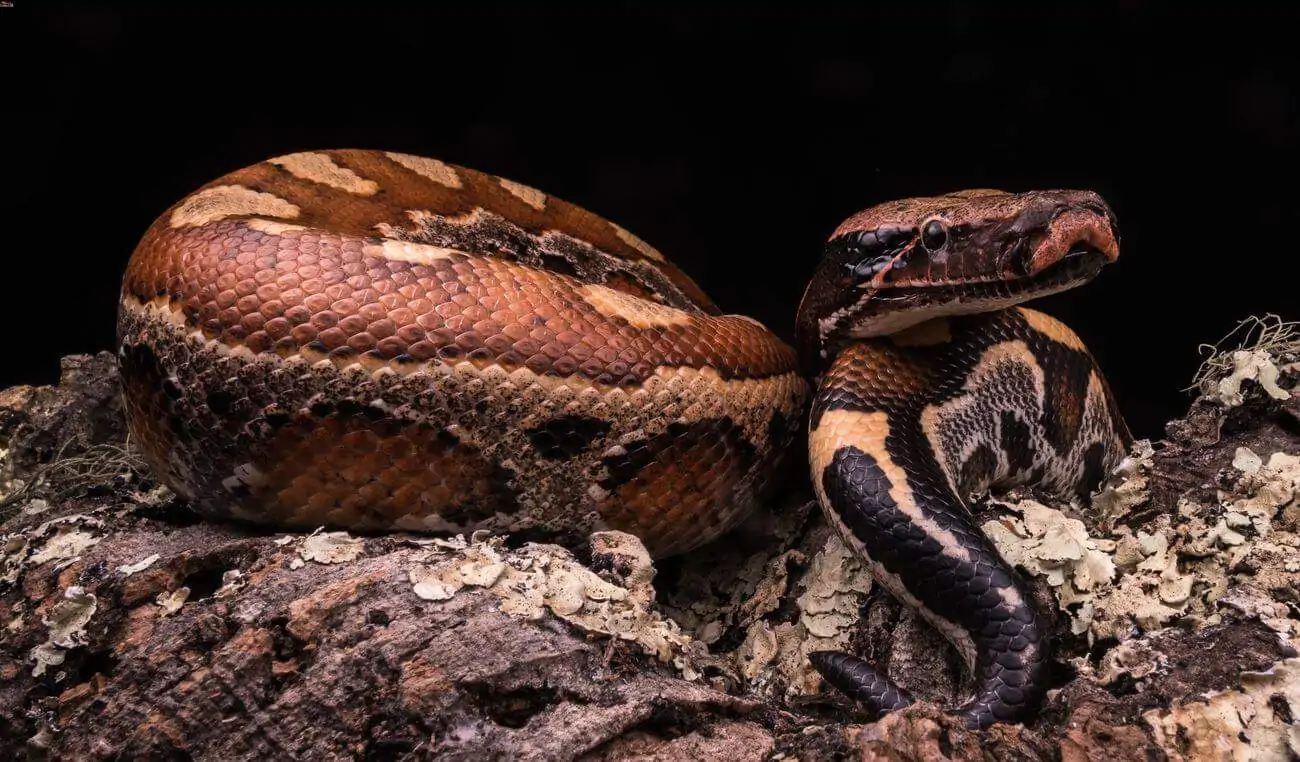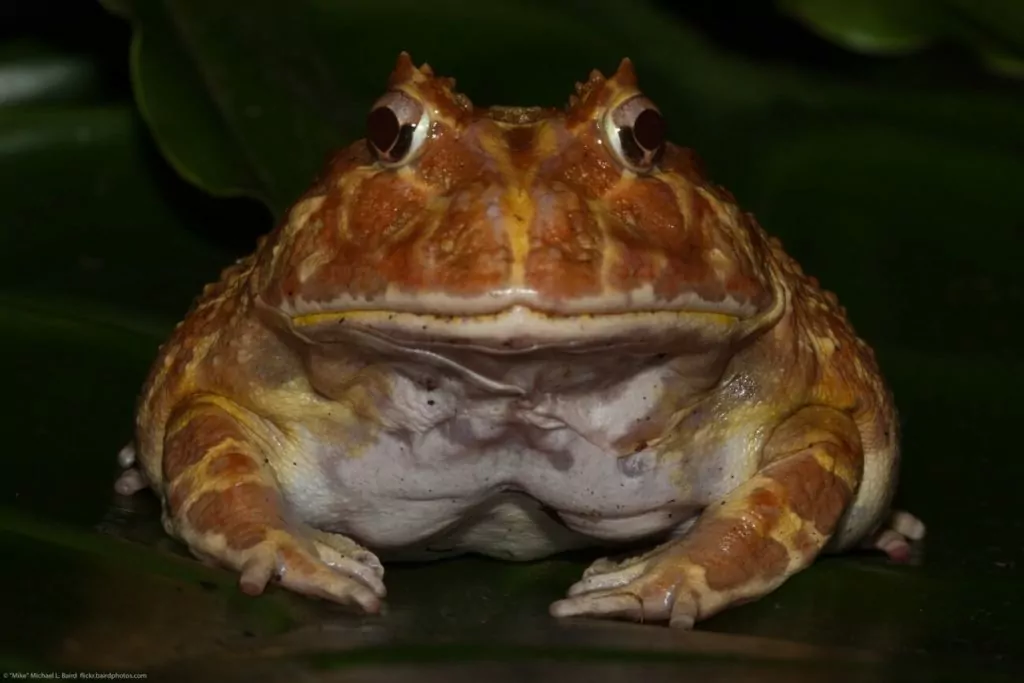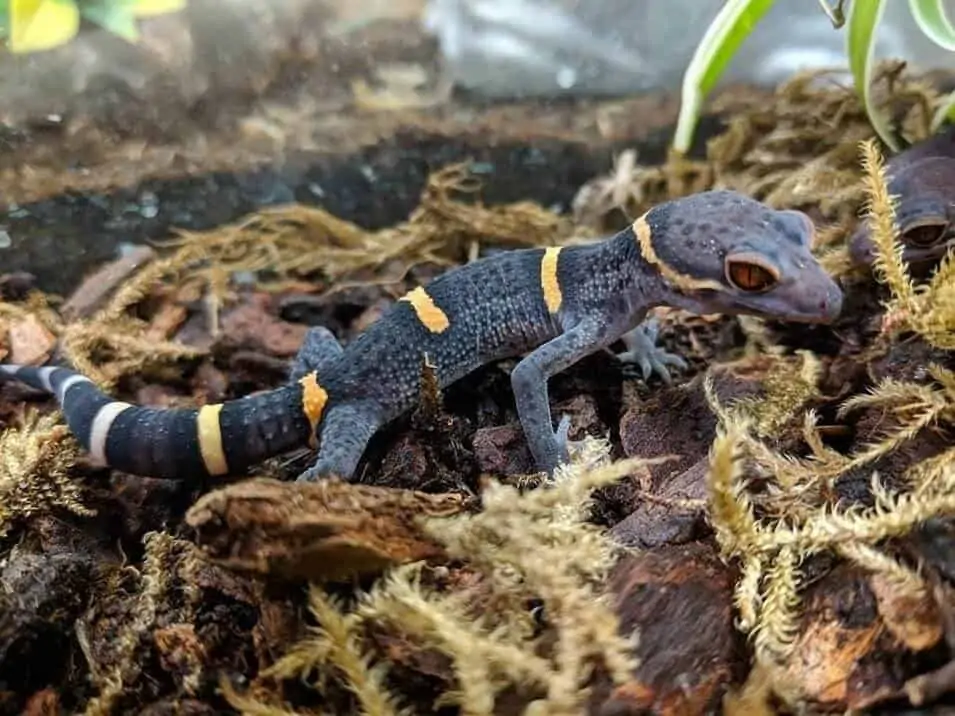Blood pythons are a neat pet snake that are gaining a fair bit of interest. Once known for being a frustrating, challenging, and downright unwelcoming reptile to keep, these snakes are now being kept by more and more owners.
This guide will help get you prepared to provide great blood python care. While these snakes might seem intimidating at first, some knowledge and persistence can make owning them a lot of fun!
Table of Contents
Species Summary
The blood python (Python brongersmai) is also sometimes called the Brongersma’s short tailed python or the red short-tailed python. In the wild, this python can be found in the marshy areas of the Malay Peninsula, Sumatra and Thailand.
Like other pythons, the blood python is a constrictor. It ambushes its prey, and once caught, squeezes it to death.
This species is becoming fairly popular as a pet, but because of its disposition and care requirements, it is definitely a snake for experienced reptile enthusiasts.
Appearance & Colors
The blood python certainly excels in the looks department. This absolutely stunning python gets its name from the blood red scales that develop when it’s around two or three years old.
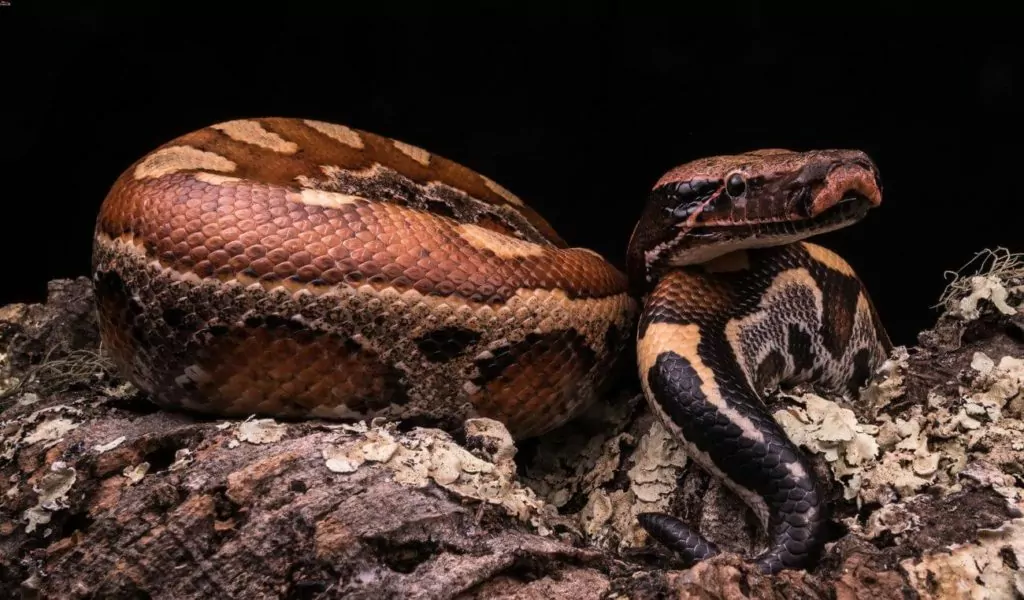
Stripes and patches of brown, tan, yellow and black are overlaid across the posterior of the python.
This medium-sized snake has a thick, muscular body that gives the blood python the strength it needs to strangle its prey. The blood python has several features that sets it apart from other snakes: palatine bones on both jaws, lower jaw suspension and non-functioning pits on the roof of its mouth.
Average Blood Python Size
The average blood python size is three to five feet in length for males, and four to six feet for females. These size ranges are for adult snakes at full maturity.
Hatchlings are usually around 10 inches long. These snakes have a fairly steady growth rate too!
Lifespan
The typical blood python lifespan is about 25 years in captivity when given proper care. That makes them an excellent choice for anyone looking to build a long-term relationship with their pet.
Expert Tip: This lifespan depends heavily on a clean, safe living environment, proper nutrition and good health. In fact, there have been reports of well-cared-for blood pythons living for 30 years, but that is not the norm.
Blood Python Care
We’d like to state up front that blood python care is for very experienced reptile owners only. While these snakes can become more comfortable with being handled (with patience and time), they won’t hesitate to show aggression if stressed or scared.
Another factor to consider is that this python can live for 25 years or even a bit more! This means that you, as a blood python owner, will need to provide excellent care for many years. Make sure that you are up to this level of commitment.
What comprises good blood python care? For its best health and happiness, a blood python needs the correct enclosure temperature, lighting, water and humidity, nutritious food and lots of places to hide and burrow.
Most importantly, your blood python needs to be treated with respect and patience. They are easily stressed, and the more you try to understand your python, the better relationship you’ll create.
Enclosure Size
When it comes to your blood python’s enclosure, size is important. These pythons are not big climbers, so you’ll need to provide an enclosure that is bigger horizontally than it is vertically.
People use all kinds of things as enclosures. Common options are plastic bins, glass tanks and enclosures made out of wood. No matter what you end up using, make sure that there is plenty of ventilation.
Expert Tip: We suggest staying away from glass tanks. Blood pythons really prefer a darker, more private living space, so glass enclosures can sometimes stress them out.
The following is a general guide to choosing the right size of enclosure.
If you have a hatchling, you can start it off in a ten gallon tub. When it gets to be around six months old, you’ll need to transfer it to an enclosure that’s about 30 inches x 12 inches. At this point, you can feel free to place it into its adult-sized home, or you can use the step-by-step approach.
Adult blood pythons do well in an enclosure of around 36 inches x 18 inches, but feel free design a bigger living space.
Habitat Setup
Unlike some snakes, blood pythons don’t require a very complex habitat setup. They are mainly burrowers, so places to hide are going to be the most important items to include. Reptile hides and artificial plants are good choices for this.
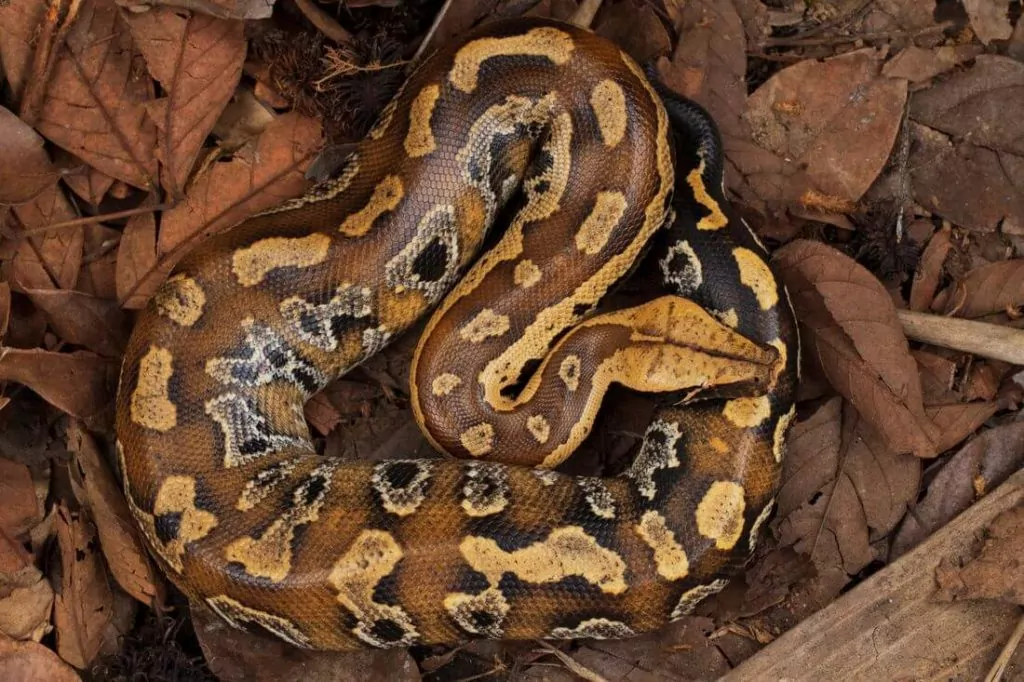
Blood pythons will climb and explore on occasion, so adding a few sturdy branches is an excellent idea. Basically, just see what works for your pet. You can always add or take things out of the enclosure as needed.
The substrate that you choose is pretty important because a good substrate can impact the humidity level, and your python will spend a lot of time burrowing. Some people use newspaper, which is totally fine. Pythons like to hide between the layers of paper.
You can also use things such as cypress mulch or shredded aspen. Avoid cedar-based products because cedar oil is a skin irritant for snakes.
Temperature & Lighting
The blood python, like other reptiles, can’t regulate its own body temperature. This means that you will need to set up a temperature gradient in the enclosure.
Basically, you will have to dedicate one side of the enclosure as the warm, basking side, and the other side can be set up to be cooler. Your blood python will go back and forth between the two sides as it needs to warm up or cool off. Placing a reptile hide on both sides of the temperature gradient is a good idea as well.
Here are the temperatures to remember:
- The ambient temperature within the enclosure should remain between 79°F and 82°F.
- The temperature on the basking side needs to be a little warmer, so 86°F is a good target.
- At night, you can let the temperature drop as low as 76°F.
You don’t really need a fancy heating system or anything. A ceramic basking light and an under the tank heating pad on the basking side should do it.
Expert Tip: Blood pythons don’t really like too much light, and they don’t require extra UVB lighting. So, the basking light will be enough for them.
Humidity
Keeping the proper level of humidity in the enclosure is very important for the health of your blood python. In fact, without the correct level of humidity, your python will have problems with shedding.
These snakes require a humidity level of 60 to 70 percent, which isn’t very difficult to maintain. It essentially comes down to having a good substrate and finding the right misting technique.
You’ll want a substrate that retains moisture without getting too wet. Also, you’ll need to provide mist, either with a hand held mister or with an automatic mister. Either one works just fine.
Expert Tip: To ensure that you’ve created the perfect humid environment, you’ll need to get a reliable and accurate hygrometer for your enclosure.
Water
You’ll need to provide these pets with plenty of fresh, clean water. When it’s time to shed, a blood python will soak for days, and water also helps to maintain the humidity level mentioned above.
The water vessel you choose doesn’t have to be anything super fancy. Really, you can use any kind of non-porous bowl or small plastic bin. The key is to keep it full of nice, clean water at all times.
Make sure to replace the water as needed, and clean the bowl thoroughly once a week.
Food & Diet
Giving your blood python the right food and getting it on a good feeding schedule are key. Blood pythons love to eat, and they can become obese very quickly.
Every blood python is different, so getting the whole feeding thing sorted out will take a bit of trial and error at first. A lot also depends on the age of the python and the origin of the python.
Blood pythons eat rats, and these rats can be live or frozen. Your python may not like the frozen-thawed rats at first, but they will usually accept them after some time. Just make sure the rats are warmed up first.
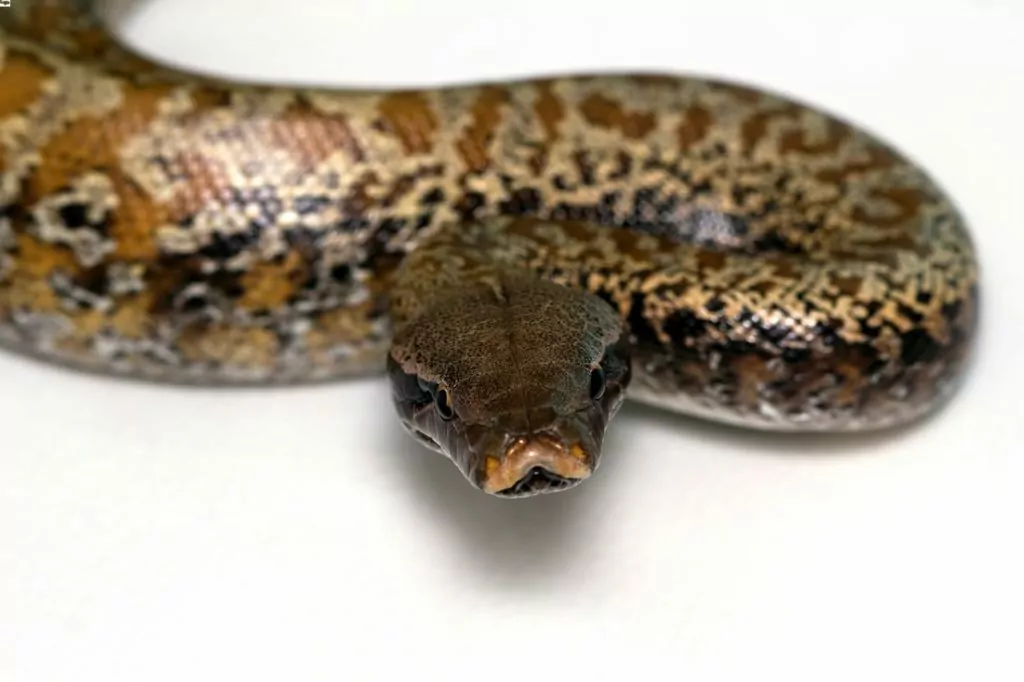
Because blood pythons are ambush feeders, they really prefer live rats. Never handle your pet for at least two hours before you’re going to feed it, and make sure that the prey is not bigger than the girth of the snake.
If you’re feeding a hatchling or a juvenile under two years of age, you can give it one rodent a week.
Adult blood pythons can have either one good-sized rat every other week, or you can give it a smaller one every week. It’s up to you and how you feel your snake does best.
Expert Tip: After your snake is done eating, wait 24 hours before handling it. This gives it time to digest in peace. And never leave uneaten prey in the feeding area. Your python can get scratched or bitten.
Many python owners remove the snake from its enclosure before feeding time as well. To avoid getting bitten from a feeding response, it’s a very good idea to get your python used to being picked up with a reptile hook. We recommend using gloves as well.
Possible Health Issues
As a responsible blood python caretaker, you’ll want to know as much as possible about the potential health problems that can occur. Here are a few things to look out for:
Snake mites: This can be a real problem for blood pythons. If you see that your python is spending a lot of time in its water bowl, and you see tiny little black specks in the water and in the enclosure, chances are that your python has an infestation of mites. Consult your veterinarian about treatment and prevention.
Improper shedding: This can be caused by an enclosure environment that is too dry, so keeping the humidity at the right level is very important. Usually the problem can be resolved with extra soaking, but once in a while, it can become serious. Again, seek help from a veterinarian.
Respiratory infections: If you notice that your snake is lethargic, is mouth breathing or has lots of mucus, chances are that it has a respiratory infection. This can be caused by things like a dirty enclosure, an improper temperature in the enclosure or a lack of ventilation. Take your python to the vet right away if you suspect a respiratory infection.
Mouth rot: Also known as infectious stomatitis, this is very common with blood pythons. Mouth rot is usually preventable because it’s caused by improper nutrition, a dirty enclosure or incorrect temperature or humidity levels.
The symptoms of mouth rot are quite horrible and include pus in the mouth, bloody gums and thick mucus.
Parasites: As with most reptiles, internal parasites can be a real issue. It’s super important to get a regular fecal test done, and a new python should always be tested before you bring it home.
Your relationship with your veterinarian is an important one, so choose one who has experience with exotics like blood pythons.
Behavior & Temperament
Blood pythons tend to have a kind of “bad boy” reputation. They are known in the reptile community to be aggressive, bad tempered and difficult to deal with.
In many cases this may be true, but there are blood python advocates who feel that this is an unfair assessment. These people feel that instead of being naturally aggressive, blood pythons are reacting to an almost constant state of stress.
If these pythons are in enclosures with too much lighting, not enough places to hide or with uncomfortable temperatures, they can become super stressed out and may bite out of frustration and fear.
Expert Tip: Blood pythons that have been bred in captivity seem to be far less aggressive and are more responsive to taming procedures.
Handling Them
Blood pythons don’t like to be handled very much. However, in many cases they can be trained to tolerate handling fairly well. Because a blood python can bite, precautions need to be taken before you pick it up or handle it.
We suggest using gloves before handling a blood python, and you should never pick one up for at least 24 hours after it has eaten.
Juveniles, even captive bred ones, might want to give you a nip or two. In general, with patience and planned handling sessions, this tendency can be lessened.
Gentleness is the key to handling these creatures. Always pick up your blood python with two hands, supporting the body carefully. Never pick it up by the tail or treat it roughly. When it understands that you’re not going to hurt it, it will usually feel more at ease.
Remember that you and your snake are going to be together for a long time, and your patience will pay off in the long run!
Conclusion
Ball python care can seem scary at first. However, it becomes a lot less scary once you’ve had some practice done your research.
If you’re a beginner, this is definitely a snake to avoid (for now). But if you have some experience and are up for a little challenge, you shouldn’t be afraid to give ownership a chance!
Let us know if you have any questions or recommendations for additional facts that we should include in this guide. We’re always looking for ways to make our content more helpful.

